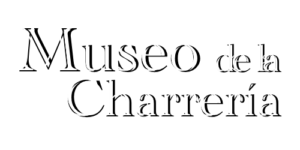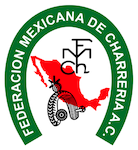MUSEUM OF THE CHARRERÍA
ABOUT US
Welcome to the Charreria Museum! Here, in the majestic Ex Convento de Nuestra Señora de Monserrat, we have been preserving the history and traditions of the charrería since 1972.
Charreria is a tradition rooted in the Mexican countryside since the 19th century. It arose from the close relationship between man, horse and cattle, a fervent coexistence that has endured throughout the history of our country. This practice has transcended the boundaries of culture and art to become a national sport recognized since the 1930s. In 2016, UNESCO declared it Intangible Cultural Heritage of Humanity®, and the Chamber of Deputies of the Congress of the Union recognized it as Mexico's cultural heritage.
INTANGIBLE CULTURAL HERITAGE UNESCO
In 2016 the Mexican Charrería was declared Intangible Heritage of Humanity by UNESCO. The declaration states the following:
Charreria, an equestrian tradition in Mexico.
Inscribed in 2016 (11.COM) on the Representative List of the Intangible Cultural Heritage of Humanity.
Charrería is a traditional practice of Mexican communities dedicated to raising and herding cattle on horseback. In its origins, it facilitated coexistence among cattle ranchers from different states of the country. The techniques of this practice were transmitted to the younger generations within the families. Today, associations and schools specially dedicated to charrería train members of the communities, even training them to participate in competitions. The organization of public competitions or charreadas allows spectators to admire the skill of the charros in the art of herding and horsemanship of mares and bulls. Wearing traditional attire-with wide-brimmed hats for the men and colorful shawls for the women-the charros show off their skills on foot or on horseback. Local artisans design and manufacture the clothing, equipment, saddles and spurs that are part of the traditional art of the charros. Charrería is an important element of the identity and cultural heritage of the communities that are custodians of this tradition, which consider it a means of transmitting to the new generations some important social values such as respect and equality of all members of the community.
The text of the official declaration by the Mexican federal government reads as follows:
The Ministry of Foreign Affairs (SRE), the Ministry of Culture, the National Institute of Anthropology and History (INAH), and the community of charro associations are pleased to jointly report the achievement of the inscription of the nomination "La Charrería, equestrian tradition in Mexico" in the Representative List of the Intangible Cultural Heritage of Humanity of the United Nations Educational, Scientific and Cultural Organization (UNESCO).
The Ministry of Culture, through the National Institute of Anthropology and History, and members of the National Association of Charros began negotiations in March 2011.
The appointment consolidates a broad and inclusive Plan for the safeguarding, preservation, dissemination and development of the cultural heritage linked to Charrería.
The Ministry of Foreign Affairs (SRE), the Ministry of Culture, the National Institute of Anthropology and History (INAH), and the community of charro associations are pleased to jointly report the achievement of the inscription of the nomination "La Charrería, equestrian tradition in Mexico" in the Representative List of the Intangible Cultural Heritage of Humanity of the United Nations Educational, Scientific and Cultural Organization (UNESCO).
After a five-year process of elaboration and evaluation, and thanks to the efforts made by the Ministry of Foreign Affairs and the Ministry of Culture of the Government of Mexico, through INAH, as well as the community, "Charrería, Equestrian Tradition in Mexico" was declared Intangible Cultural Heritage of Humanity, which makes it the eighth living cultural manifestation of Mexico to receive this distinction.
The inscription was approved during the 11th Session of the Intergovernmental Committee for the Safeguarding of the Intangible Cultural Heritage, currently being held in Addis Ababa, Ethiopia, on the basis of the solid dossier prepared jointly by INAH and the National Association of Charros, which was unanimously accepted by the members of the Committee, currently made up of: Afghanistan, Algeria, Armenia, Austria, Bulgaria, Cyprus, Colombia, Côte d'Ivoire, Cuba, Ethiopia, Philippines, Guatemala, Hungary, India, Lebanon, Mauritius, Mongolia, Palestine, Republic of Korea, Republic of Congo, Saint Lucia, Senegal, Turkey and Zambia.
The file, the result of extensive documentary and field research, describes the Charrería as a clear example of the diversity of cultural expressions that arise from the meeting of cultures that give rise to Mexico, and whose birth dates back to the sixteenth century when, as a result of the establishment and rise of cattle ranches in central and northern Mexico, the need arose for coexistence between the cowboys of the different farms to meet to inventory and mark cattle on each property, The need for coexistence among the cowboys of the different farms arose when they met to inventory and mark the cattle of each property, turning the field work into a reason for coexistence and social articulation, being the origin of a Mexican equestrian school that allowed the handling of cattle while riding on horseback and that was distinguished, among other things, by the use of the saddle and the reata, essential utensil for roping the cattle.
One of the most important documents that make up the official file submitted to UNESCO is the Safeguarding Plan, prepared by the carrier community, in this case represented by members of the National Association of Charros, the Association of Charros de Jalisco, the Association of Charros de Huichapan, the Association of Charros de Polotitlán, the Asociación de Charros de la Cuenca del Papaloapan, the Asociación de Charros Regionales de San Juan del Río, the Asociación de Charros de Morelia and the Asociación de Charros de la Tuna Alta, together with representatives of the artisan community and the support of the governments of Jalisco, the State of Mexico and Mexico City. The Safeguarding Plan includes measures such as the creation of a Charrería Conservatory, made up of various governmental, academic and civil society bodies, such as the Ministry of Culture, the Ministry of Public Education, the Institutes of Historical Research, the Institute of Aesthetic Research and the Institute of Aesthetic Research, de Investigaciones Estéticas and de Investigaciones Sociales of the Universidad Nacional Autónoma de México, the Instituto Nacional de Antropología e Historia, the Federación Mexicana de Charrería, the Instituto Nacional de las Bellas Artes, the Instituto Mexicano de la Juventud and the Instituto Mexicano para la Mujer, as well as members of the Mexican community.
Currently, Charreria is practiced in Mexico through almost 2,000 annual events in which around 1,000 existing charro associations participate. It is no less important to note that its practice has spread in the United States of America, where there are 184 charro communities distributed in 13 states, namely Arizona, California, Colorado, Idaho, Illinois, Kansas, Nebraska, Nevada, New Mexico, Oklahoma, Oregon, Texas and Washington.
CONSTITUTION OF THE MUSEUM
In 1973, under the presidency of Mr. Luis Echeverría Álvarez and the leadership of the Department of Tourism, in charge of Mr. Agustín Olachea Borbón, this majestic building was ceded to the National Federation of Charros for the Federated Charrería. Mr. Octavio Sentíes Gómez, head of the Federal District Department, ordered its remodeling through the areas of the Cuauhtémoc Delegation, under the supervision of Delegate Mr. Delin Sánchez Juárez. From that day on, it became "El Palacio de la Charrería", depository and custodian of the valuable traditions of the Mexican countryside.
We thank the National Lottery for Public Assistance, on behalf of the entire charrería, for their generosity in allocating the necessary resources for the remodeling of the Charrería Museum. Thanks to their support, we have preserved the culture and tradition of Mexico.
In 1992, under the presidency of Mr. Carlos Salinas de Gortari and the Secretary of Urban Development and Ecology, Mr. Patricio Chirinos Calero, the Federal Government granted the Federation of Charros the use of the Palacio de la Charrería in commodatum for another 25 years. This emblematic building continues to be the home of the Charrería Museum and the bastion of the guardianship of Mexico's identity and our noble nation, the charrería.
MEXICAN FEDERATION OF CHARRERÍA
The Mexican Federation of Charrería AC is the institution in charge of promoting, preserving and disseminating charrería, the national sport par excellence and a cultural expression that brings identity and pride to all Mexicans.
Background:
Charreria has its roots in the Mexican countryside, where equestrian skill and cattle handling have been an integral part of our history since ancient times. Over the centuries, this tradition has been consolidated as a sport that combines skill, elegance and values rooted in our roots.
The Mexican Federation of Charrería (FMCH) was born as a result of the need to unify and organize the practice of charrería in Mexico. Over time, charrería evolved and gained relevance as a national sport and cultural expression, but it lacked an entity to represent it officially.
In 1921, the First National Charro Congress was held in Mexico City, where various representatives of charro associations and groups from different states of the country met. During this congress, the importance of creating an organization that would regulate and promote charrería in a unified manner was discussed.
Thus, on January 16, 1921, the Federación Nacional de Charros was founded, which would later become the Federación Mexicana de Charrería. Its main objective was to bring together the different groups and associations of charros, establish rules and regulations for competitions, as well as preserve and disseminate the traditions and values of charrería.
Over the years, the FMCH has worked hard to consolidate and strengthen charrería as a national sport, promoting its practice, encouraging the training of new charros and promoting participation in national and international competitions. The federation has become the main governing body of charreria in Mexico, being recognized both nationally and internationally.
Thanks to the constant and committed work of the Mexican Charreria Federation, this tradition rooted in our roots has endured and has become a symbol of identity and pride for all Mexicans. The federation continues to work tirelessly to preserve and spread the greatness of charrería, promoting the values and traditions that characterize it.
Mission:
The mission of the Federación Mexicana de Charrería is to preserve and strengthen charrería as a living symbol of our culture, encouraging the practice of the sport, the training of new charros and the dissemination of its traditions. We work to safeguard this invaluable legacy and pass it on to future generations, promoting respect, camaraderie and love for our roots.
Vision:
Our vision is to be recognized as the leading institution in the promotion and development of charrería at a national and international level. We seek to be a reference in the training of charros, the organization of high-level competitions and the dissemination of charrería as a unique and emblematic cultural manifestation of Mexico. We aspire for charrería to be valued and admired around the world as a symbol of our identity and traditions.
The Federación Mexicana de Charrería is proud to represent all charros and charreadas in the country, working tirelessly to keep this cultural and sporting heritage alive. Together with the Museo de la Charrería, we seek to preserve and disseminate the richness of our history and traditions, generating a sense of belonging and admiration for this legacy that defines us as Mexicans.
Join us on this exciting journey through the charrería, discover the excitement of our competitions, the skill of the charros and the splendor of our traditions. Welcome to the Charrería Museum and the Mexican Federation of Charrería, where we celebrate the greatness of our national sport and the pride of being Mexican!
NATIONAL BOARD OF DIRECTORS 2024-2028
SALVADOR BARAJAS DEL TORO
Chairman
Jalisco
S.G.M. NATALIA I
National Queen
Jalisco
EFRAÍN RAMÍREZ GONZÁLEZ
Vice President
Jalisco
RAFAEL MANSUR OVIEDO
General Secretary
Veracruz
JORGE URIBE BARROSO
Commissioner
Hidalgo
GERÓNIMO COLOR GASCA
Treasury and Finance
Michoacán
JUAN BAÑUELOS RAMÍREZ
Sports
Jalisco
ROSENDO DE LEÓN SEPÚLVEDA
Public Relations
Nuevo León
JOSÉ LUIS MALDONADO ÁLVAREZ
Social and Cultural Promotion
Querétaro
JESÚS EDGAR VIÑUELA NAVARRO
Press and Dissemination
Mexico City
CARLOS ALBERTO PUENTE SALAS
Minutes
Zacatecas
MAURICIO DANIEL VERGARA AGUILAR
Honor and Justice
Mexico
JOSÉ DE JESÚS FERMÍN TORRES
Honor and Justice
Coahuila
JORGE BLASCO FLORES
Honor and Justice
Puebla
SILVIA RODRÍGUEZ RODRÍGUEZ
National Coordinating Committee of Escaramuzas
Yucatan
JOSÉ DE JESÚS FERMIN TORRES
National Judges Coordinator
Coahuila
ROBERTO ALFONSO GUERRA ROJAS
National Sports Commission Coordinator
Querétaro
SAÚL MUNGUÍA ORTIZ
Manager
Jalisco
CREDITS
The Museo Nacional de la Charrería website was published in November 2023 and was made possible by the following people:
JOSÉ ANTONIO SALCEDO LÓPEZ
Chairman of the National Board of Directors 2020-2024
Rafael Alberto Rodríguez Fuentes
Secretary of Treasury and Finance 2020-2024
Luis Raúl García Gancedo
Secretary of Social and Cultural Promotion 2020-2024
Edgar Abel Diaz Tapia
Press and Broadcasting Secretary 2020-2024
Javier Ortega
Museum Director 2020-2024
Humberto Carmona Cobo
Public Relations, Curatorial and Archive
Antonio Gegundez Martínez
Photography, Design and Web Development




